
The Internet and computing have become an absolutely integral part of everyday life. Some would say too much so. As debates about whether we are too chained to our digital devices continue to flourish, historians and other humanists find themselves asking different questions. Where did these devices come from, whose labor created them, and what social and cultural forces collided to make their creation and adoption possible? Scholars of digital media and the digital humanities are starting to delve more deeply into the history of computer culture, looking for parts of the story that may have been neglected, buried, or otherwise left out of existing accounts of Silicon Valley and the rise of the Internet.
I am a professor of digital media at the University of Michigan at Ann Arbor, where I teach in the American Culture and Asian Pacific Islander Studies Department, and the Screen Arts and Cultures Department. I have published two books on how people of color were represented in the text-only Internet of the nineties as well as the more visual Internet of the 2000s. The artifacts I have studied have all been digital ones, such as chatrooms, websites, and MMO’s (Massively Multiplayer Online Role Playing games) such as Blizzard’s World of Warcraft.
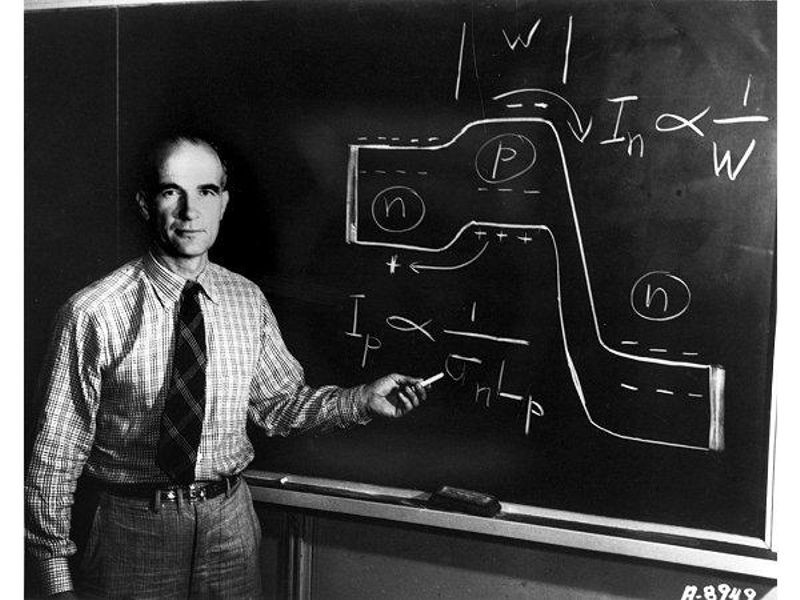
Figure 1: William B. Shockley (1910-1989), © Alcatel-Lucent USA Inc.
For my latest book project I wanted to take a different research path and became interested in the history of people of color as workers in Silicon Valley’s computer chip industry. Stanford University’s Special Collections and University Archives is home to boxes of both organized and unorganized material on William Shockley, a towering figure in the history of Silicon Valley. Shockley was best known for having co-invented the transistor with Walter Brattain and John Bardeen, and his story has been covered in fine histories such as Hoddeson and Riordan’s Crystal Fire: the Invention of the Transistor and the Birth of the Information Age. However, I was less interested in Shockley as the “Father of Silicon Valley” and more interested in Shockley’s later years, when he became a very public advocate of scientific racism, also known as eugenics.
Just as the Civil Rights movement in the U.S. was gaining traction, Shockley loudly and publicly espoused the claim that African Americans were less intelligent than white Americans. He hardly could have chosen a worse time to advocate this position. His lectures on eugenics at Stanford were picketed by student activists. Shockley denied charges of racism, citing data that he interpreted to mean that Asians and Jews were more intelligent than white Americans. This claim mollified nobody, and despite having used his position in the American Academy of Sciences to give a series of unpopular and unwelcome lectures on the virtues of eugenics, he attracted few followers. The sperm bank that Shockley opened to distribute the sperm of Nobel Prize winners free of charge to women interested in improving the race attracted no donors other than Shockley himself.
Despite his shortcomings, Shockley was a brilliant scientist and an influential entrepreneur. Shockley was as well known for being a legendarily poor manger, as he was a masterful hand at hiring the best talent. I was curious to see whether his opinions influenced his hiring decisions, and by extension, those of other CEO’s in Silicon Valley’s formative years. Could it be possible that the Asian “model minority” stereotype, and the scarcity of African American and Latinos in the computer industry, might have something to do with hiring practices based on opinions like Shockley’s? Could he have had a hand in stacking the deck for and against racial groups that he thought were inferior or superior? Might Shockley’s loudly espoused racism have deepened the “digital divide” and prevented the computer industry from being more diverse?
I’ll never know, because at Stanford I came across a box of materials that would change the direction of my research entirely. This box contained Fairchild corporate newsletters and annual reports for shareholders that depicted Navajo women bent over microscopes soldering together integrated circuits. I had no idea that indigenous people in the U.S. had played such an important role in the early history of computing devices. As an ethnic studies scholar I had some knowledge about Native American history, but I had never heard or imagined that such a thing could have existed. It flew in the face of all my knowledge about Silicon Valley and racial minorities. It became clear that this was my next project.
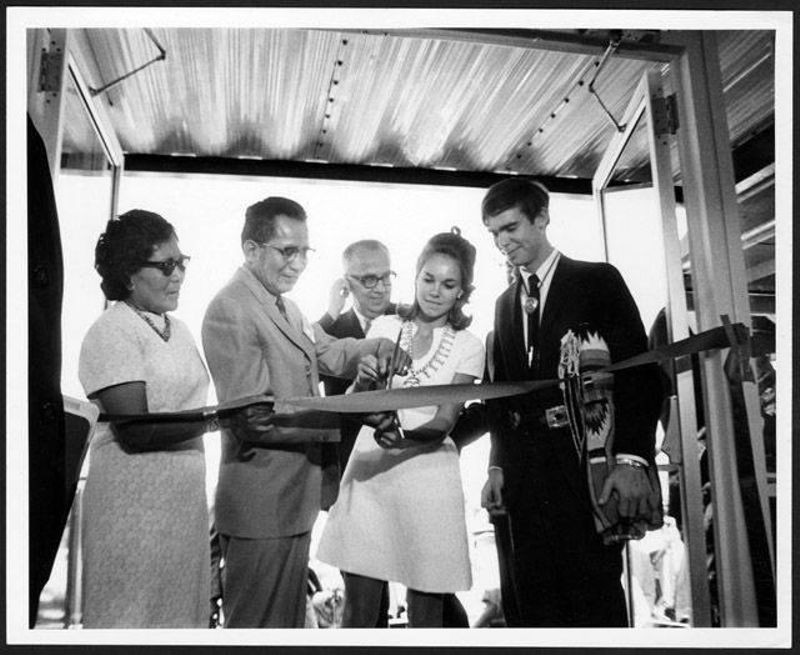
Figure 2: Ribbon cutting at Fairchild Building Dedication, Shiprock, New Mexico, September 8, 1969. Image courtesy of Northern Arizona University, Cline Library Special Collections and Archives, Nakai, Raymond Collection.
I learned that from 1965-1975 the Fairchild Corporation’s Semiconductor Division operated a large integrated circuit manufacturing plant in Shiprock, New Mexico, on a Navajo reservation. During this time the corporation was the largest private employer of Indian workers in the U.S. The circuits that the almost entirely female Navajo workers produced were used in devices such as calculators, missile guidance systems, and other early computing devices. After going through Stanford’s boxes, I knew that I needed to learn more. As they had no doubt done many times in the past, the Stanford librarians steered me to the Computer History Museum. Unfortunately, by this time I needed to return to Illinois. I contacted the CHM via email to inquire about their materials on the Fairchild semiconductor plant that was built on the Shiprock Navajo Reservation and after a few exchanges I made a research appointment. When I arrived in person I was greeted with boxes and boxes of brochures, internal memos, legal papers, and other materials documenting the workings of the first, and it turns out, the last semiconductor plant built on Navajo land.
This archive was simply amazing. Some of the materials were donated by former Fairchild employees, such as Terry McCollister, an engineering manager, and Geri Hadley, a marketing manager, who had found them among their things long after retirement and donated them to the CHM. From the material I learned that the plant was welcomed by the Navajo in Shiprock, and that after some initial difficulties, Navajo women became highly regarded as assembly workers due to their nimble fingers and careful craftswomanship. The story of Navajo women in early computing is very little documented in official histories of Silicon Valley. Most people associate Navajo people with blanket weaving, sheep farming, and jewelry making, not with digital technologies. Both the University of Illinois, where I worked when I started this research, and the University of Michigan have excellent American Indian Studies programs, and I knew from my colleagues’ work that the presence of Indians has often been ignored in traditional histories of the U.S. I was determined to learn as much as I could about Fairchild’s engagement with Navajo people as some of the industry’s first high tech workers.
How and why did the most advanced semiconductor manufacturer in the world build a state of the art electronics assembly plant on a Navajo reservation in 1965? The short answer is: cheap, plentiful, skillful workers, and tax benefits. A 1969 Fairchild News Release explains that the plant was “the culmination of joint efforts of the Navajo People, the U.S. Bureau of Indian Affairs (B.I.A), and Fairchild.” Navajo leadership helped to push this project forward; Raymond Nakai, chairman of the Navajo Nation from 1963 to 1971, and the self-styled first “modern” Navajo leader, was instrumental in bringing Fairchild to Shiprock. He spoke fervently about the necessity of transforming the Navajo as a “modern” Indian tribe, and what better way to do so than to put its members to work making chips, potent signs of futurity that were no bigger than a person’s fingernail?
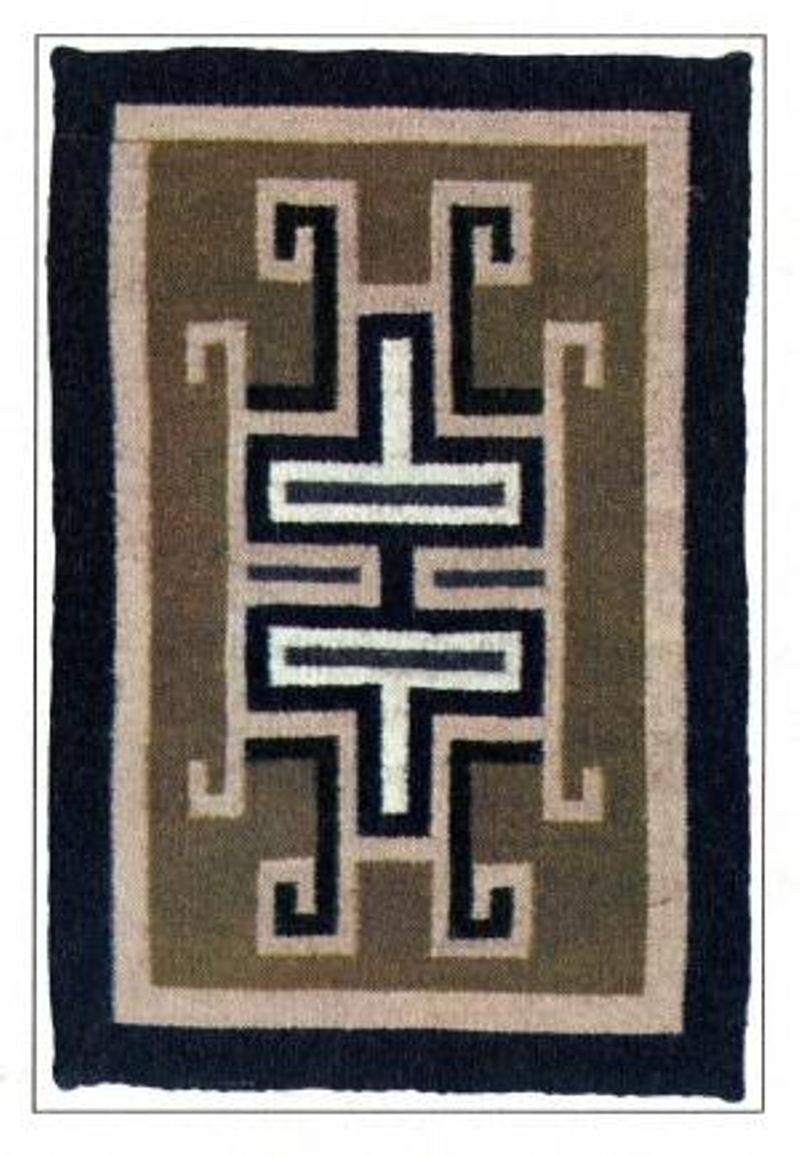
Figure 3: 1969 Fairchild color brochure celebrating the opening of the Shiprock, New Mexico plant.
At the CHM I stumbled upon the prize artifact that would kickstart my research: a 1969 Fairchild color brochure celebrating the opening of the Shiprock, New Mexico plant. It was full of photographs of women weaving rugs as well as bent over microscopes in the fabrication laboratory. The first page of the brochure (figure 3) features only a large photograph of a rectangular brown, black, and white rug, woven in a geometric pattern composed of connecting and intersecting right angles. Adjoining it is a short paragraph: “Thank you for helping us celebrate the dedication of Fairchild Semiconductor’s new Shiprock facility—a partnership in progress.”
The accompanying text reminds the reader that “Weaving, like all Navajo arts, is done with unique imagination and craftsmanship, and it has been done that way for centuries….[for] “building electronic devices, transistors and integrated circuits, also requires this same personal commitment to perfection. And so, it was very natural that when Fairchild Semiconductor needed to expand its operations, its managers looked at an area of highly skilled people living in and around Shiprock, New Mexico.”
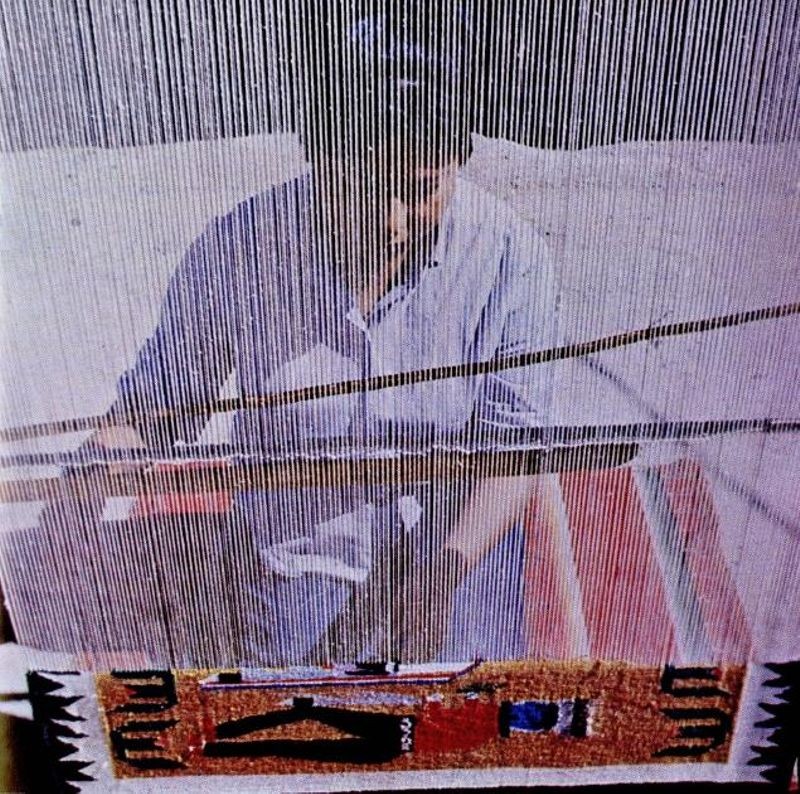
Figure 4: Navajo woman weaving
The brochure’s following image (figure 5), which depicts a Fairchild 9040 integrated circuit, “used in communications satellites like COMSAT,” has been enlarged so that its geometry fills the whole page. The resemblance between the pattern of the rug depicted on the first page and the circuit is entirely striking and uncanny. It makes the visual argument that Indian rugs are merely a different version of the exact same pattern or aesthetic tradition found within the integrated circuit. The opposing page states, “The blending of innate Navajo skill and [Fairchild] Semiconductor’s precision assembly techniques has made the Shiprock plant one of Fairchild’s best facilities—not just in terms of production but in quality as well.”
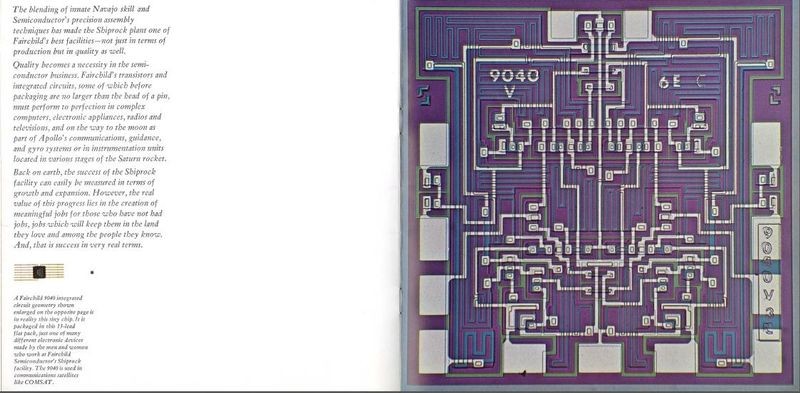
Figure 5: Fairchild 9040 integrated circuit used in communications satellites like COMSAT.
The idea that Navajo weavers are ideally suited, indeed hard-wired, to craft circuit designs onto either yarn or metal appeals to a romantic notion of what Indians are and the role that they play in U.S. histories of technology.
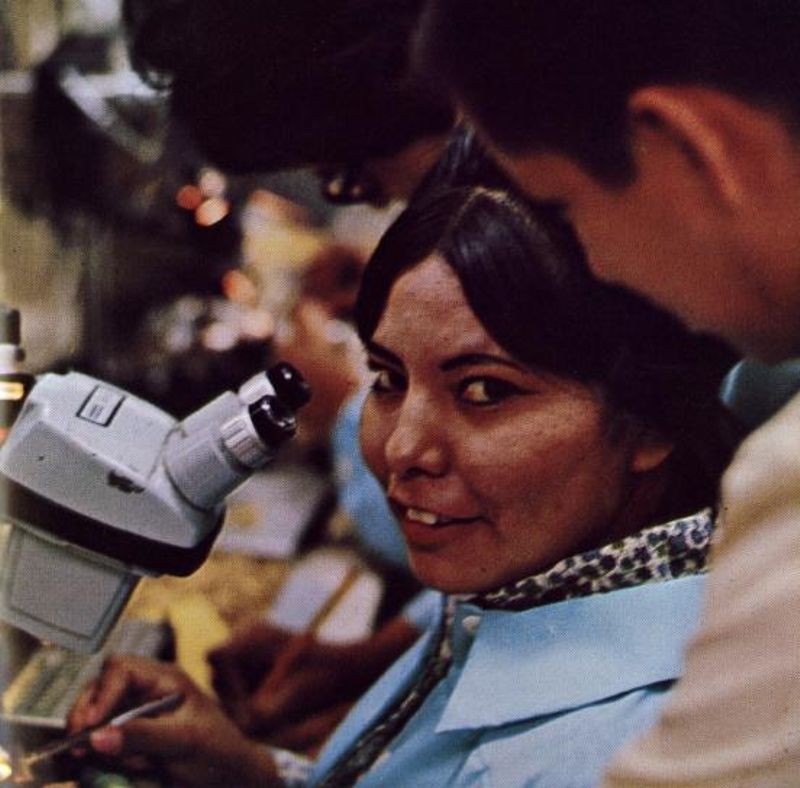
Figure 6: Navajo woman at microscope in fabrication laboratory
This experiment in bringing the high tech electronics industry to the Navajo Reservation at Shiprock ended abruptly. In 1975, protesters associated with the American Indian Movement occupied and shut down the plant, demanding better conditions for workers. Indeed, the industry had experienced a slow down and some workers had been laid off. Though this was part of a national trend and not unique to the Shiprock plant, given the national social context of protest against racism and civil rights violations, it is not surprising that this occupation followed on the heels of AIM’s stand-off at Wounded Knee and the occupation of Alcatraz in California. The protesters viewed the plant as a continuation of the exploitation of native people, and they were correct that the Shiprock area had suffered from economic hardship for many years, hardship that was directly related to the long-standing disempowerment and impoverishment of the Navajo. It was difficult for them to perceive these layoffs as anything but more of the same. The protesters left after a week, but by then Fairchild had already decided to close the plant permanently, focusing instead on its operations in Asia.
My new book will begin with a chapter based on this research, “Indigenous Circuits: Navajo Women and the Racialization of Early Electronic Manufacture.” This section documents how the idea of outsourcing electronic manufacture to female workers of color in Asia was piloted within U.S. borders, on a Navajo reservation in the 1960s and 70s.
I am profoundly grateful to the Computer History Museum for their help with this research, which started out as a project on eugenics and Silicon Valley and ended up as something very different.